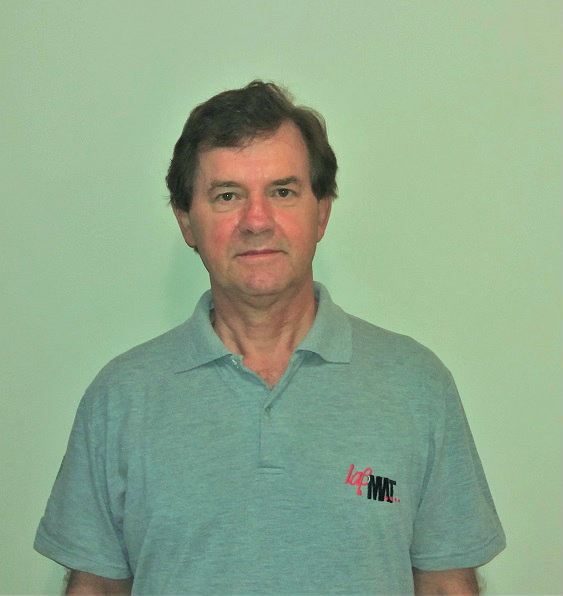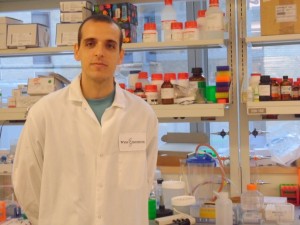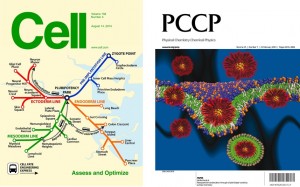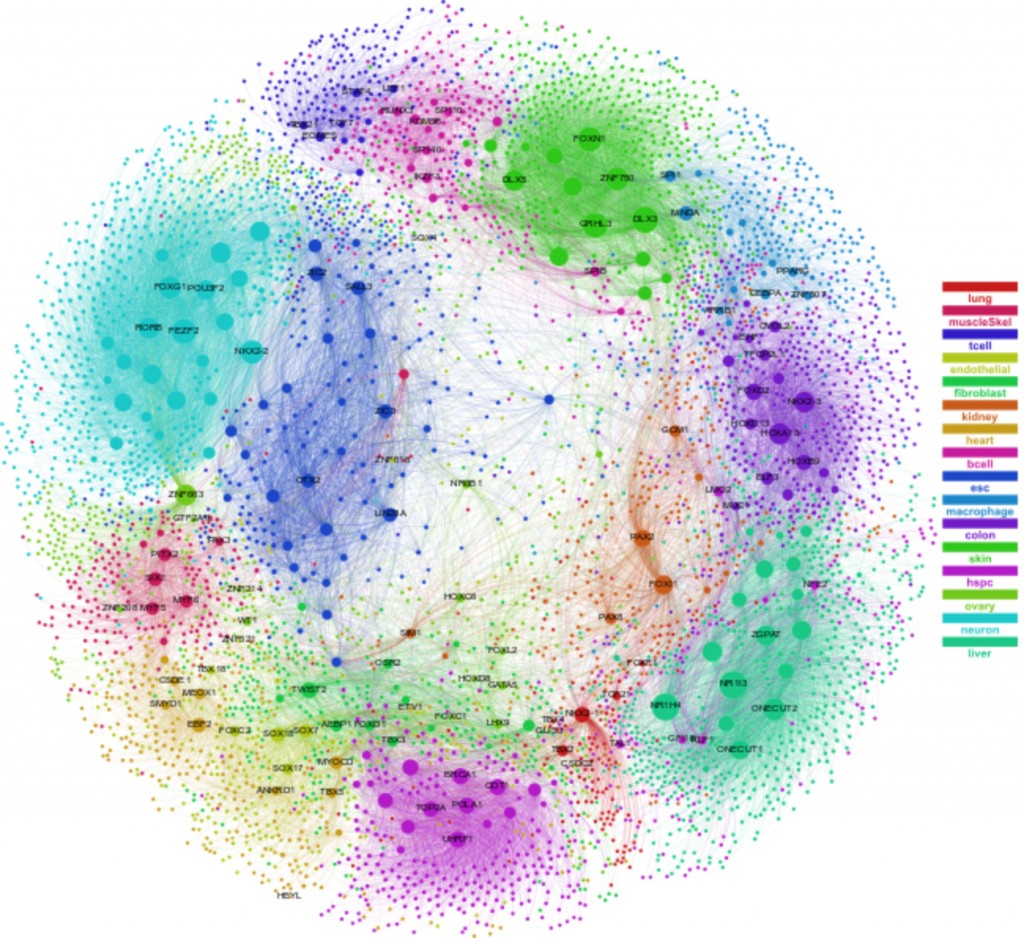Sorry, this entry is only available in Brazilian Portuguese.
Tag: UFSC
(Português) Inscrições para mestrado acadêmico em Nanociência, Processos e Materiais Avançados (UFSC – Blumenau).
Call for the scholarship PNPD/CAPES with PPGFSC/UFSC – 2018/1.
The Graduate Program in Physics of Federal University of Santa Catarina – PPGFSC/UFSC, Florianópolis, announces the vacancy of 2 (two) postdoctoral scholarships from the (Programa Nacional de Pós-doutorado da Coordenação de Aperfeiçoamento de Pessoal de Nível Superior – PNPD/CAPES), to the period of 2 (two) years, it can be renewed annually at a maximum of 60 months.
The monthly amount of the scholarship is R$ 4.100.00 (four thousand one hundred reais) beyond the values destined to assets.
The candidate has to act in THEORETICAL or EXPERIMENTAL research lines at one of the following areas of research: Astrophysics, Atomic and Molecular Physics, Condensed Matter Physics and Statistical Mechanics, Mathematical Physics and Quantum Field Theory and Nuclear Physics and Hadrons.
The complete regulation of the Graduate Program (Programa Nacional de Pós-Doutorado – PNPD) is described at:Portaria nº 086, de 03 de julho de 2013.
To make your application: click here
Admission Process to entrance at the Graduate Program in Physics of the Federal University of Santa Catarina (PPGFSC/UFSC)
Call for applications at the admission process of the master and PhD courses from the Graduate Program in Physics from UFSC – Florianópolis, entrance at the semester 2018/1.
Deadline for applications close at November 27, 2017 until 5:00 pm.
Remember that the applications are online and the candidate no needs to furnish the grade of EUF to fill the application form. It’s enough furnishes the inscription number and the month/year when he/she took the EUF.
Participating of the Admission Process the master candidate must take one of two last editions of EUF (Exame Unificado das Pós-Graduações em Física) and the PhD candidate must take some of last five editions.
The complete notice and other information are available at: http://ppgfsc.posgrad.ufsc.br/processo-seletivo-mestrado-e-doutorado/
(Português) Processo Seletivo para ingresso no PPGFSC/UFSC.
People from SBPMat community: Prof. Aloísio Nelmo Klein.

Aloísio Nelmo Klein was born on December 5, 1950 in Passo do Faxinal, a small village populated by German descendants in the state of Rio Grande do Sul (south of Brazil). During his childhood in this rural environment, he cultivated a special taste for solving technical problems of everyday life, quite like his father. Still a child, he started working on steel and constructing mechanisms for toys. At the age of 14, he moved to the nearby town of Cerro Largo to complete his secondary studies in a boarding school. In 1969, he moved to Viamão, on the outskirts of Porto Alegre, about 500 kilometers from his home, after successfully passing a selection process to study technical education at the competitive Technical School of Agronomy (ETA). This environment sparked a strong interest in Physics, Chemistry and Mathematics. He graduated from ETA at the end of 1971.
Klein graduated in Physics from the Federal University of Rio Grande do Sul (UFRGS) in 1976. He received his master`s degree in Mining, Metallurgical and Materials Engineering at this same university in 1979. In 1983, he defended his PhD thesis in Engineering, in the area of powder metallurgy and sintered materials from the Technical University of Karlsruhe (Germany), now the Karlsruhe Institute of Technology (KIT).
Klein has been a professor at the Federal University of Santa Catarina (UFSC) in Florianópolis since 1979. He was one of the leaders in introducing Materials Science and Engineering at this institution. He has been in charge of the Laboratory of Materials (LabMat) since 1984, a well-known multidisciplinary space, mainly due to its research and development work carried out with companies. Relying on the team and infrastructure consolidated around LabMat, Klein led the creation and was the first coordinator of the postgraduate program in Materials Science and Engineering (PGMAT) at UFSC, responsible for producing masters and doctors since 1994, and also the Materials Engineering course at UFSC, which began its activities in 1999.
Throughout his career, Klein has made relevant contributions to the development of equipment and processes for manufacturing materials from powders and the applications of plasma technologies, considering that some of these developments have been successfully introduced in the market through partnerships with companies.
Klein has been an active participant in SBPMat since it began. He was part of the committee responsible for creating the society in 2001, and was also the scientific director on two occasions (2004-2005 and 2010-2011) and member of the Deliberative Council and coordinator of the annual meetings of the society in 2006 and 2012, both held in Florianópolis.
Klein also participated in the creation, in 1993, and governance of the Ceramic Center of Brazil (CCB), dedicated to certifying the quality of ceramic products.
CNPq Productivity Fellow – Level 1 A – Professor Aloísio Klein is the author of more than 60 patent applications filed in offices in Brazil, Europe, the United States, China, South Korea, Japan, Taiwan, Singapore and Australia, and at least 8 of these patents have already been granted (the others are under examination). According to the SCOPUS database, Klein is also the author of more than 130 published articles, which have more than 700 citations.
Regarding the training of human resources, Professor Klein has already supervised 41 master’s and 27 doctoral students, as well as dozens of undergraduate and postdoctoral studies, and has mediated more than 100 UFSC student participation abroad for internships , exchanges and postgraduate courses.
Many of his works have been honored with awards from Finep, Brazilian Ceramic Association, Brazilian Metallurgy and Materials Association and UFSC, in addition to other entities.
Here is an interview with the researcher.
SBPMat Bulletin: – Tell us what led you to become a scientist and eventually work in the Materials area.
Aloísio Klein: – The technical area always fascinated me, especially as my father who had no advanced education, was so interested in solving technical problems and fixing things, including watches, musical instruments, guns, cars, tractors, agricultural tools and so forth. I was still a child when I started to be interested in this and lend a hand. I helped making toys like for instance wheelbarrows with steering, brakes, springs, and traction levers, things that did not exist 55 years ago. Before primary school, I helped to make helical springs for toys, rolling the steel wire, quenching and tempering in the fire, surrounded by charcoal. The temperature reading was done by the color of the heated object. At the age of 14, I entered the São Jose Seminary boarding school in Cerro Largo (RS), where I stayed for 5 and a half years. It was an excellent school, the teachers were well prepared. The principles and values I had acquired from my family and where I was born and raised were further reinforced in the Seminary – which I still hold. I learned other things at the boarding school, which were very important in the future: how to live in a group environment and learn how to share, despite having little; help those in need and so forth. Furthermore, Greek and Latin classes gave me the opportunity to learn how to express myself well orally and in writing. In fact, I have never regretted having studied there, because I learned humility and how to deal with the work environment. I believe that living in boarding school helps develop the ability to get along in groups and understand early on that this is really important. After leaving the Seminary I went to study at ETA (Technical School of Agronomy) in the municipality of Viamão (RS). This was a state school, where you could live (boarding school) and study for free, which is why I pushed myself to study there. ETA was a disputed public school (as were most public schools at the time!). There were about 20 candidates per vacancy in 1969, when I was accepted. The years I spent at ETA were excellent. However, the disciplines that interested me the most were not those related to Agronomy, they were Physics, Chemistry and Mathematics. I graduated from ETA in December 1971 and in March 1972 I started the Physics course at the Institute of Physics at the Federal University of Rio Grande do Sul (UFRGS). I graduated in December 1976 and started a master’s degree in the post-graduate program in Mining, Metallurgy and Materials Engineering at UFRGS in March 1977, which I conclude in January 1979. On February 5 of 1979 I was hired as a professor in the Department of Mechanical Engineering at the Federal University of Santa Catarina (UFSC). Also in November of 1979 I went to Karlsruhe, Germany, to enter the PhD program in Materials, in the Subarea of Powder Metallurgy and Sintered Materials. In August 1983, after completing my doctorate, I resumed my duties at UFSC. And in March 1984, I became the coordinator of the Materials Laboratory (now LabMat) A post I still hold and which I will pass on to my successor, already prepared for this, once I retire.
SBPMat Bulletin: – What do you believe are your main contributions to the Materials area?
Aloísio Klein: – Throughout my career at UFSC, I coordinated many research projects, most of them in partnership with companies. Most of the projects had more technological than scientific goals. This was not by chance but out of conviction. I have always believed (and still do) that science is one of the main driving forces for the development of a nation, in addition to education and quality schools. It is from scientific knowledge that new processes are developed, new engineering functions, new materials and other products, that is, innovation results from scientific knowledge. These projects have always been proposed considering a larger group of people as a team, around 8 to 12 professors (in addition to students and engineers) in order to integrate the knowledge-based specializations necessary for the high-quality development of projects. In addition to colleagues from the departments of Mechanical Engineering, Electrical Engineering and Chemical Engineering, professors from the Physics and Chemistry departments were involved, resulting in a multidisciplinary team. However, the project is successful if the multidisciplinary team interacts interdisciplinarily in order to have a synergistic effect. It’s useless merely dividing the money and the tasks. This aspect has never been very easy to manage. Achieving this has always been much more difficult than the technical-scientific part, because a team is made up of individuals, each with his/her particularities, ambitions, egos, and so on. I personally believe that learning to deal with this was very useful to arrive at the LabMat we have today at UFSC.
Due to developing projects with defined technological goals, many patents have been achieved over the last 30 years, currently included in my curriculum, totaling about 65 patent letters, including processes and products (new components, materials and equipment). In addition to the patents, I am also the author/co-author of 135 international articles in journals and 203 articles in Annals of Conferences. I have mentored about 64 IC students, 41 master’s students, 27 doctoral students and 20 post-doc fellows.
In addition, I led the creation of a postgraduate course in Materials Science and Engineering (PGMAT) which began its activities in 1994, currently a 6 score in Capes, and the undergraduate course in Materials Engineering, which began its activities in 1999, currently with a maximum score in Capes. In fact, success means work and in 2010, as a sign of recognition, I was awarded the prize for outstanding researcher at the Technological Center of UFSC.
I think my main contributions (generally with the participation of doctoral or master’s students) are related to the development of processes and new materials and equipment such as: a) Conceptual project of the extraction process of organic binders and sintering assisted by DC plasma components produced via injection molding, known as “Plasma Assisted Debinding and Sintering – PADS”. b) Conceptual design of the Hybrid Plasma Reactor. This reactor, besides the anode-cathode system to open the electric discharge, has a set of electrical resistances to maintain the control of the thermal cycle independent of the energy used in the plasma. Then, the energy of the ions and electrons in the plasma environment can be adjusted to assist the reactions of interest, while the additional heat needed to achieve the programmed thermal cycle is supplied by the resistive heating system. The coexistence of these two systems in the same environment, without the electric discharge in the electrical resistances, is very important. This (thermal cycle not dependent on plasma energy) allowed a significant advance in the use of plasma to assist various processes, such as thermochemical and metallurgical treatments, including the processing of materials from powders (powder metallurgy and ceramic processing). c) Conceptual design of plasma nitriding equipment that allows cleaning organic waste and its nitriding in the same thermal cycle, for example, used in parts containing oil residues, such as sintered parts after calibration and machined parts. d) The in situ generation of phases of interest in powder metallurgy, such as the generation of turbostractic graphite from the disintegration of sintered steel carbides, leading to the development of new types of dry self-lubricating sintered steels. e) Development of new types of non-cobalt hard metal, in which nickel alloys generated in situ during sintering are used as metallic binder phase. f) The constant effort to integrate multidisciplinary teams and work in partnership with the productive sector in my projects. The partnership with EMBRACO, for example, has been going on uninterruptedly for 28 years and will certainly continue after my retirement, given that the successor is fully engaged in this partnership.
It is equally important to mention the intense participation in analysis committees and other activities that are important for the development of science and technology, such as: 1) Member (1989 to 1995) of the technical group of the PADCTII new materials subprogram (MCT/FINEP/CNPq); 2) Two times member of the CA-MM – Advisory Committee on Mines, Metallurgy and Materials of CNPq (1997 to 1999) and (2007 to 2009); 3) Member (1997 to 2001) of the technical group in Sciences and Engineering of Materials (CEMAT) of the PADCT III new materials sub-program of the Ministry of Science and Technology; 4) Member of the evaluation and monitoring committee program of the PRONEX / MCT (1998 to 2003); 5) Member (2007 to 2010) of the study group of the CGEE (Center for Management and Strategic Studies) – Prospective study in Materials; 6) Member of the evaluation committee of the postgraduate courses in the Materials area. Trienal 2010 – CAPES; 7) A total of 32 invited lectures throughout my career as researcher (in companies, conferences and research institutions); 8) I was able to send more than 100 students abroad (undergraduate, master’s and doctorate) to carry out internships, exchanges, masters and doctorates; 9) Ad hoc consultant, mainly the development-funding agencies CNPq, CAPES, FINEP, FAPESC and DAAD (Germany); 10) I participated in the creation and was a full member of the deliberative council of CCB (Ceramic Center of Brazil) from 1993 to 2003; 11) I was vice president of the Ceramic Center of Brazil from 1996 to 2001; 12) I participated in the creation of CTC (Criciuma Ceramics Center, now called CTCma); 13) I led the creation (1994) and was the first coordinator of the postgraduate program in Materials Science and Engineering of UFSC ( PGMAT); 14) I led the creation (1999) and was the first coordinator of the undergraduate course in Materials Engineering at UFSC.
SBPMat Bulletin: – Please leave a message for the readers who are starting their scientific careers.
Aloísio Klein: – The career of researcher is possibly the best career in the world. When we have ideas, society approves the resources so that we can develop our ideas. Even when an idea did not work out, we advanced and reformulated the idea with the acquired knowledge. The environment we work in is a very good environment. There are a lot of smart people and a lot of young people, smart and qualified, full of enthusiasm. When we have a good idea, we soon have plenty of people willing to participate in its development. We’re never alone. When we go to a conference, we also find a very select group of people where you can exchange high level ideas, not only with senior people in the area, but also with very creative and intelligent young people. No competent young person is not funded to attend a conference.
(Português) Processo Seletivo para ingresso no Programa de Pós-Graduação em Física da Universidade Federal de Santa Catarina (PPGFSC/UFSC).
(Português) Bolsa de pós-doutorado junto ao PPGFSC-UFSC.
(Português) Processo seletivo para ingresso no programa de pós-graduação em Física da Universidade Federal de Santa Catarina (PPGFSC/UFSC).
Capes Doctoral Dissertation Award 2015: Interview with the author of the award-winning work in Materials area.

The scientific career of Edroaldo Lummertz da Rocha is permeated by two features of the area of Materials science and technology: interdisciplinarity and impact on people’s lives.
After graduating in Computer Science from Universidade do Extremo Sul Catarinense (UNESC), in the south of Brazil, Edroaldo got his master’s degree in Electrical Engineering at the Federal University of Santa Catarina (UFSC), with a study on the transport of phonons in fractal geometry. In 2010, he began a doctoratal program in Materials Science and Engineering, also at UFSC. With the advised of Professor Carlos Renato Rambo and Professor Luismar Marques Porto, Edroaldo worked on the interface among Materials Science, Computer Science and Biology to study the interaction between biological cells and bio and nanomaterials. In 2012, Edroaldo submitted, as first author, a scientific paper on simulations of interactions between nanoparticles and cell membranes. His paper was published in the journal Physical Chemistry Chemical Physics (DOI: 10.1039 / C2CP44035K) in 2013 and was featured on the front cover.
From January to December 2013, Edroaldo remained in the United States developing a part of his doctoral research at Harvard University (United States), more precisely in the Wyss Institute for Biologically Inspired Engineering, a multidisciplinary and multiinstitutional entity dedicated to the development of materials and devices inspired in nature, aimed at transforming medicine and building a more sustainable world. There he was advised by Professor Donald E. Ingber, founder and director of Wyss.

A second journal cover (DOI:10.1016/j.cell.2014.07 .020) increased Edroaldo´s curriculum in 2014 as a result of his participation, along with researchers at Harvard University and other institutions in the United States, in a Cell Engineering field study.This time the distinction was in Cell, the prestigious journal of Life Sciences, whose impact factor is 32.242.
In September 2014, Edroaldo obtained his PhD degree by defending his dissertation entitled “Nanoparticle-cell interactions and biomaterial-cells induce global changes in gene expression programs“. A year latter, the work was distinguished as the best dissertation defended in Brazil in 2014 by Capes, the government agency linked to the Brazilian Ministry of Education in charge of promoting high standards for post-graduate courses in Brazil. Edroaldo received the news of the award in the city of Rochester, in the United States, where he works in scientific activities as a postdoctoral fellow of the Mayo Clinic, an institution in the field of Medicine dedicated to research, education and patients´ care.
Interview with Edroaldo.
SBPMat Newsletter: – Could you tell us very briefly how did you become interested in science and in the Materials area, and what were the most important moments in your academic career so far?
Edroaldo Lummertz da Rocha: – My interest in science arose from the possibility of doing something important and helping people somehow. My interest in the Materials area arose due to the existence of a special class of materials, called nanomaterials, which can be used for the development of new therapies for a variety of diseases such as cancer, vascular and neurodegenerative diseases. However, the understanding of how nanomaterials interact with cells and biological tissues is extremely important for the development of safe and effective therapies.
The first most important event of my academic career was when Professor Carlos Renato Rambo, of the Federal University of Santa Catarina, agreed to be my advisor during my doctoral period. That’s where it all began. The second most important moment was when I had the opportunity to conduct part of my doctorate studies at the Wyss Institute at Harvard University, which significantly contributed to the development of my academic career.

SBPMat Newsletter: – What, in your opinion, is the main contribution of your award-winning thesis?
Edroaldo Lummertz da Rocha: – The main contribution of my thesis was the development of computational approaches to systematically understand how cells interact with nanomaterials and respond to external stimuli. This can serve as a basis for future studies in the field of development of new drug delivery systems and lead to a better understanding of how gene expression programs change when nanomaterials interact with cells.
SBPMat Newsletter: – Which criteria guided you to make a quality research highlighted at national level (the award-winning thesis)? To what factors do you attribute this achievement?
Edroaldo Lummertz da Rocha: – Dedication, discipline, creativity and a good team and co-workers are essential to progress in any area. Family support is essential, above all. From the point of view of the thesis, under the guidance of Professor Carlos Renato Rambo, I had the opportunity to work in a variety of projects and this contributed to the multidisciplinary nature of my thesis.
SBPMat Newsletter: – We invite you to leave a message for our readers who are conducting scientific research in the Materials area.
Edroaldo Lummertz da Rocha: – It is a long road, so you might as well enjoy the way. Being a scientist is something really rewarding, with new challenges and opportunities every day. The hope of discovering something important and providing a significant contribution is the driving force that guides my research. The effort is never in vain and there is always hope where there is perseverance.
More award-winners in the Materials field.
Several other works related to Materials Science and Engineering were awarded this year with the Capes Thesis Award, which was awarded to the best doctoral theses in 2014 in each of the 48 areas of knowledge recognized by Capes in postgraduate courses. The announcement of the winners was made on August 31 and the awards event will take place on December 10 in Brasilia city, the capital of Brazil. Here follow some examples related to Materials area:
– Honorable Mention in the Materials area. Thiers Massami Uehara. Study of the interaction of nanomaterials with models of cell membranes and neural stem cells. Advisor: Valtencir Zucolotto. Postgraduate Program in Science and Engineering of Materials – USP/SC. Dissertation file: http://www.teses.usp.br/teses/disponiveis/18/18158/tde-27102014-134646/pt-br.php
– Capes Award in Chemistry. Rodrigo Villegas Salvatierra. Thin Films of Conjugated Polymer and Carbon Nanostructures obtained in Liquid-Liquid Interfaces: Synthesis, characterization and application in photovoltaic devices. Advisor: Aldo José Gorgatti Zarbin. Postgraduate Program in Chemistry – UFPR. Dissertation file: http://dspace.c3sl.ufpr.br:8080/dspace/handle/1884/37915
– Honorable mention in Chemistry. Anderson dos Reis Albuquerque. Quantum-Chemical Study of the Ti(1-x)CexO2-δ in the Anatase Phase. Advisors: Ieda Maria Garcia dos Santos (DQ-UFPB) and Júlio Ricardo Sambrano (DM-UNESP Bauru). Postgraduate Program in Chemistry – UFPB. Thesis file: http://tede.biblioteca.ufpb.br/handle/tede/7154?locale=pt_BR. Report on CDMF website: http://www.nanotecnologia.com.br/trabalho-orientado-por-professor-do-cdmf-recebe-mencao-honrosa-no-premio-capes-2015/
